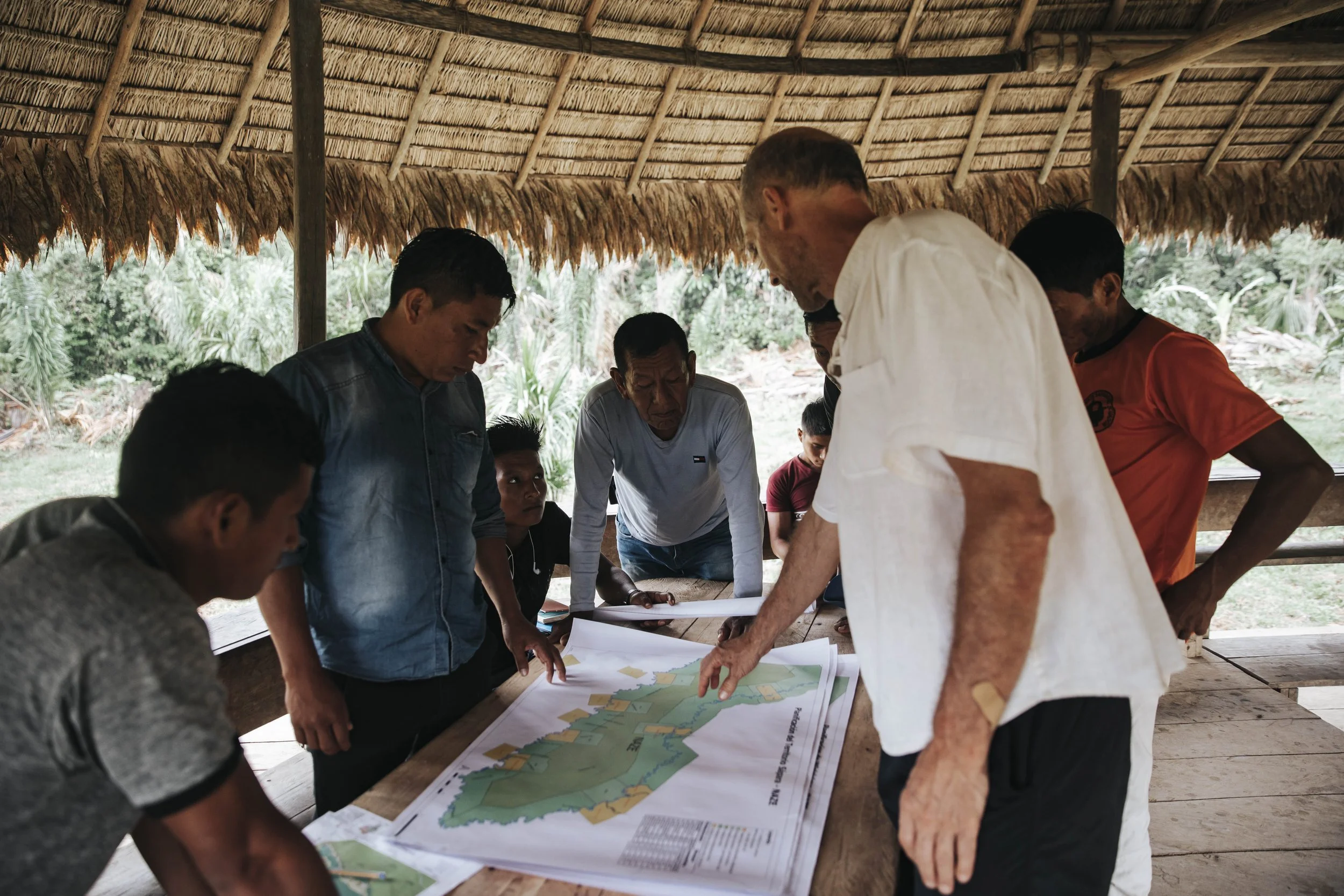
Indigenous led conservation allows the ancient lifeways of the communities to guide the work.
Andes Amazon Conservancy’s 21st century conservation is a new paradigm of landscape scale connectivity- based conservation, which stands in stark contrast to the isolating conservation practices that are currently employed globally.
Consensus based processes ensure that the sovereign will of the people is enacted at every step of the process. Communities are in charge and are being trained and resourced to eventually take over the entire process.
AAC’s edible forest initiative repairs the harm caused by the deforestation practices of the people, who because of the devastating impact of colonization and a cash economy, have no other choice but to sell rainforest timber in order to survive.
We plant recently-decimated and culturally-significant fruit and nut trees for a 3 fold impact:
1, strategically planted trees create needed connectivity between fragmented sections of rainforest that is essential for thriving wildlife.
2, the edible forest initiative provides income to local communities who are planting and tending the trees.
3, In 5-7 years when these trees reach maturity, they will provide needed food security for both humans and migrating wildlife in the region.
AAC’s Conservation land-use planning legal strategy protects against future harm of the ancient rainforest. As community plans are registered with the local and national governments, their sovereign will is codified which allows them to counter and halt the ploy of extractive industry to desecrate their lands.


False Solutions Accelerate Extinction
Create a pattern of survival
In 2021 an Indigenous community in Ecuador partnered with a renowned and prominent INGO, calling on their supposed expertise to develop a comprehensive land-use plan for their region.
Later that year the same community approached AAC for a partnership with their new plan in hand. When our Chief Conservation Strategist reviewed the plan he was shocked to see it promoted a "pattern of extinction."
“Pattern of extinction” is the language we use to describe human-led efforts that rapidly accelerate biodiversity loss. In this case the well-funded INGO recommended concentrating all human activities along both banks of the river that transected their village.
Undeveloped riverbanks and watersheds are vital for wildlife migration, serving as the cornerstone of a thriving biodiversity and robust wildlife population. When human activity encroaches on both sides of a river, it obstructs ancient migration routes, affecting creatures from the tiniest seeds and insects to the largest mammals. Consequently, this leads to a decline in the very wildlife that the community relies on for its survival.
This same community has now sought the expertise of AAC to receive effective conservation and community land-use planning. Our approach interrupts any harmful patterns in the present and takes into account a century of human population growth. It ensures the sustained availability of clean water and an abundant wildlife habitat for future generations.
The key defining element that makes AAC stand out from the rest is our 100 year community and conservation land-use planning which allows communities to prepare for 100 years of population growth and food production needs, while also creating a fractal pattern of unobstructed wildlife migration corridors throughout their territories.
These 2 elements are the key to long term protection of this vital ancient rainforest. Using the AAC land-use planning model, wild lands are maintained on both side of major waterways, which is essential for maintaining the conditions for regenerative biodiversity that is the hallmark of this globally significant region.